Kasserine Pass GB: 1/48 scale Tamiya FW-190A , Oblt. E. Rudorffer, CO 6 / JG2 Tunisia
This article is part of a series:
- Kasserine Pass GB: 1/48 scale Tamiya FW-190A , Oblt. E. Rudorffer, CO 6 / JG2 Tunisia
- 1/48 Tamiya FW-190 A8, “Otto Kittel” 2. JG 54, Black 1, Werk Number 690 282
- 1/48 Tamiya FW-190 A4, as Flown by Leutnant Eberhard Von Burath, Adjutant 1 Gruppe / JG 1
- Tamiya 1/48 FW-190 A3, Werk Number 223, Hans “Assi” Hahn, Gruppenkommandeur III / JG 2
Better late than never they say...who ever "they" are. Here it is finally.
This is the Tamiya FW-190 A-3 kit, that I updated to make it look like a later A-4 version with a few simple modifications. These are all covered in the construction journal.
The model was built using the parts supplied in the kit. Nothing was added, other than some minor scratch building. The scratch building consisted of modifying the exhaust louvers on the sides of the fuselage, and adding a small antennae on the tip of the rudder.
The FW-190 was painted using Model Master enamels. Most parts were air brushed. The exhaust stains and desert dust were done using several of the Tamiya weathering decks. This was a very enjoyable build, and I can highly recommend this kit for it's ease of assembly. The fit is typical Tamiya even though this is one of their older kits. I didn't have to use putty anywhere on the build. A few swipes with a razor and some slight sanding work was all that was needed to rid the model of any visible seams.
There are some that state the landing gear legs are too short. This is probably true. I don't have any other 190 A "Anton's" built by another manufacturer or technical / scale drawings to compare it to. Once completed, I can assure you it looks like a Focke Wulf 190.
All of my built examples in the display cases are from Tamiya, except for a long nosed Dora I built from Hobby Boss. Eventually, once I get some more 190's built from other manufacturers, I may end up doing an article comparing the various offerings available.
The decals used were a combination of the kit supplied items, plus a few others from the decal stash, like the "Yellow 1" and the Yellow Staffel Bar.
If you have one of these in your unbuilt collection, do yourself a big favor and break out the glue, then get busy. You will be glad you did. 
I built this model as part of the excellent Group Build that was organized and coached by my good friend, David A. Thomas.
The good Professor took a lot of time, out of his ever busy schedule to comment on, and encourage all of us along the way. Thanks David for everything you did to help make this GB turn out the way it did.
In typical "Iron Werks" fashion, I decided to thin down the collection of unbuilt kits by building four Tamiya radial engine Focke Wulf kits. Three were the earlier A3 version, while one was the F-8 ground attack plane that I converted into a JG 54 A-8 plane as "possibly" could have been flown by Otto Kittel.
Here is a link to the build:
and a few photos showing the end results of the build... 4 happy Wurgers, with no two alike.
Since the Eduard company recently released an excellent A4 version, which has these markings of "Yellow 1", I knew at the very moment I saw it, I was going to have to build a plane like it... or one that was very similar.
That's when I started doing some research on found an artists rendition of another Focke Wulf from Tunisia that was painted very similar. This drawing was supposedly of a plane flown by another "Experten" Adolph Dickfeld, and had the markings of "Double Black Chevron" on the fuselage sides.
Having chased this version down, and doing a lot of research with some help from my friends, I could never find an actual photo of the plane...and I doubted the plane was painted like this as most 190's that arrived from Europe retained the typical RLM 74 / 75 / 76 colors while operating in North Africa.
So I went back to the original plan and built "Yellow 1" using the Tamiya kit with a few small modifications.
Here are a few photos that were shared with me that show 190's operating out of North Africa.
The first reportedly shows Rudorferr sitting in the cockpit of his 190. This picture may have been taken a little later after the plane was painted with the top sides in overall RLM 79. It was reported that his plane eventually received some darker green splotches on top of the overall RLM 79 tan. The nose appears quite dark, and "could" show some of the dark green...
I was able to find another picture of Rudorrfer which may verify the man in the cockpit of the above picture is indeed who it was claimed to be...
This is another photo, and this plane may be one flown by Kurt Buhligen, another "Experten" flying over North Africa. If you look closely, you will see this is an early A3 version, and it has white identification stripes visible under the outer wing tips.
During the build journal, Paul Barber posted a link, that shows some of the home movies that were taken by Oblt. Rudorffer himself. I was able to freeze it on a frame and enlarge it. Luckily for us it was in color. Here you can see the yellow under the nose and various other neat details... such as the under wing stripes in white. It also looks as if camouflage tarps were used to help conceal the planes when on the ground.
Erich Rudorffer was the 7th most successful fighter pilot in the Luftwaffe. Ironically he started out as an automotive sheet metal mechanic right after he graduated from High School. Rudorrfer joined the Luftwaffe in April of 1936, and was assigned as a Bomber Crew member serving with KG 253 from 2 September to 15 October 1936.
After this he went to an aircraft engine school. He was in school from mid October to the end of February 1937. Upon completion of school, he was reassigned to another bomber group, this time KG 153. This time he was a mechanic or "black man" as they were referred to due to the color of their work uniforms.
On October 1st, 1938, he was transferred to a "Flyer Replacement Unit" where he began training as a bomber pilot. Upon completion of his bomber pilot training, he was trained as a "Zerstorer" or heavy twin engine fighter pilot.
One year later in October 1939, (one month after the War was started in Poland), he was transferred to a Fighter pilot school. He went through several advanced fighter pilot schools following this assignment. It was at these advanced fighter pilot schools, that he was instructed by fighter pilots who had actual combat experience.
Rudorferr was then assigned to his first Fighter Unit, 2nd Staffel / JG 2"Richtofen" , on January 7th, 1940.
His first credited victory was a French Curtiss built Hawk 75, which is the export version of the P-36, similar to the one in this photo shown below. He scored 8 times over France.
Erich flew throughout the Battle of Britain. It was "claimed" that he was chased by a Hurricane down Croyden High Street, at an altitude below the roof tops !
On May 1st, 1941, he achieved his 19th victory, and was presented the "Knight's Cross of the Iron Cross".
Upon receiving this award, he was promoted as the "Staffelkapitain" of 6 / JG 2 the following month. He and his wingman attacked a diving submarine off the coast of the Isle of Portland. His bombs were reported as landing very close to the submarine. So close that the sub was observed as going down vertically.
By the end of December 1941, he had claimed 40 kills. He participated in the "Channel Dash", and flew over the Allied landings at Dieppe in August 1942. In November 1942, his unit was transferred to Sicily, and shortly afterwards, his Unit moved to Tunisia. This is where "Yellow 1" comes into town...
The planes arrived in Tunisia, some of them were painted with the top sides covered in overall RLM 79. This was painted right over the typical European camouflage colors of RLM 74 / 75 /76. The original RLM 76 underside color of light blue was retained.
On the "early" 190 A-3's, the planes were painted at the Focke Wulf factory using the earlier RLM 71 / 02 / 65 colors that you would normally associate with on Battle of Britain era 109's. (I learned this little bit of information while doing research for building my Hahn 190 A3 ...).
Once Erich Rudorferr arrived in Tunisia, his scores began to climb even higher. The 190 was an unwelcomed guest for the Allies when the "Wurger's" arrived. Here they held up to their name of "Butcher Bird".
In February 9th, 1943, he defeated 8 British pilots in a matter of 32 minutes. Several days later on February 15th, he claimed 7 more kills. While flying in North Africa he shot down 10 Allied bombers.
After the Germans evacuated Tunisia, (when Rommel defied Hitler's order to stand to the last man), he assumed command of II / JG 54, and was transferred to the Eastern Front in July of 1943.
While flying at the Eastern Front, Rudorferr's score climbed even higher... Here he achieved results that seem unbelievable had they occurred today. During his first combat mission on August 24, 1943, he managed to shoot down 5 Russian planes in only 4 minutes.
By the 11th of October, he hit the "Century" mark and scored his 100th victory by claiming a Yak 7. In doing so, he became the 55th German pilot to achieve this number. The Yak 7 was shot down at 12:22 hours, followed by a LaGG-3 a few seconds later. Within 5 more minutes, he managed to shoot down 3 more Yak-7's, one at 12:24, one at 12:25 and the last one at 12:27 hours. He scored at least 5 planes in 5 minutes...
Less than a month later, on November 6th, he was credited with shooting down 13 more Russian fighters...in 17 minutes, from 13:00 to 13:17 hours. Eight planes were Yak -7's, while 5 were Yak-9's. This information was obtained online at Wikipedia.
While flying fighters on the Eastern Front, Rudorferr was credited with shooting down 134 Soviet planes.
Many of these were the heavily armored Russian Il-2 Sturmovik, of which he managed to down 58 while flying on the Eastern Front ! These Sturmovik's were often referred to as "Flying Tanks" like the one in this picture below...
During the winter of 1944, Rudorferr trained on flying the new Me-262 jet fighter and was destined to become a member of JG 7 "Nowotony". By February of 1945, he was recalled and became the Commander of I / JG 7.
While flying the new Me 262 Fighter, he scored another 12 victories ...
His score is broken down as follows after searching the German Federal Archives. It varies a little from other published accounts:
219 confirmed, 2 further "unconfirmed" kills for a total of 221
85 victories on the Western Front ... this included 11 Heavy Bombers, and 12 while flying 262's.
26 of these victories were in North Africa, but are included in the Western Front total.
136 victories on the Eastern Front.
He was reported to have been shot down 16 times. This was a combined total between Flak and enemy fighters.
Bailed out taking to his parachute 9 times. He was a member of the "Caterpillar Club" because of this.
Engaged in Aerial Combat over 300 times... scoring 221 victories (some say 222).
Flew over 1,000 combat missions. To quote Gunther Rall, another surviving German Fighter Ace, they flew until you "Got the "Iron Cross" or the "Wooden Cross" when you were killed". Unlike the Allied pilot's who flew a set number of missions and rotated home, The Germans flew until the end, in one way or another.
He survived the War and later flew DC-2's and DC-3's in Australia. After this, he worked for Pan Am in Germany.
He died at the age of 98 in April of 2016.
As per my usual sign off,
" Comments are encouraged"

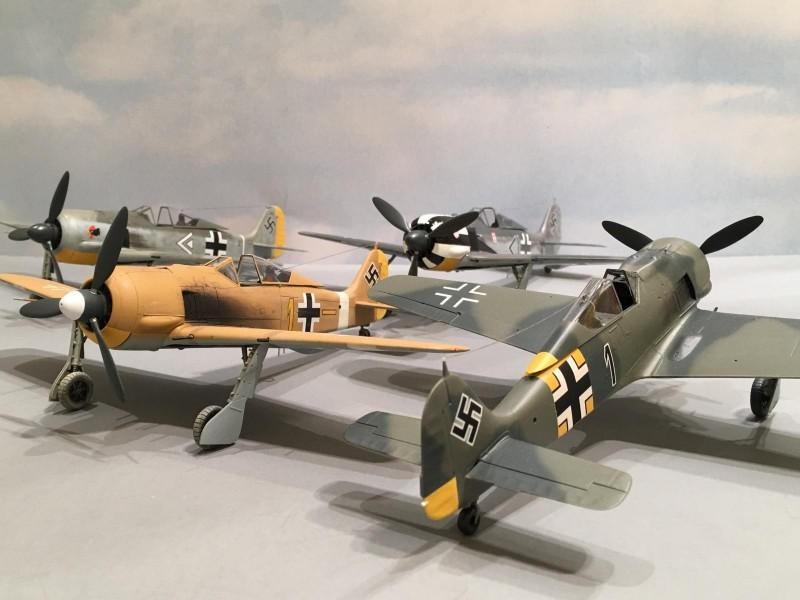
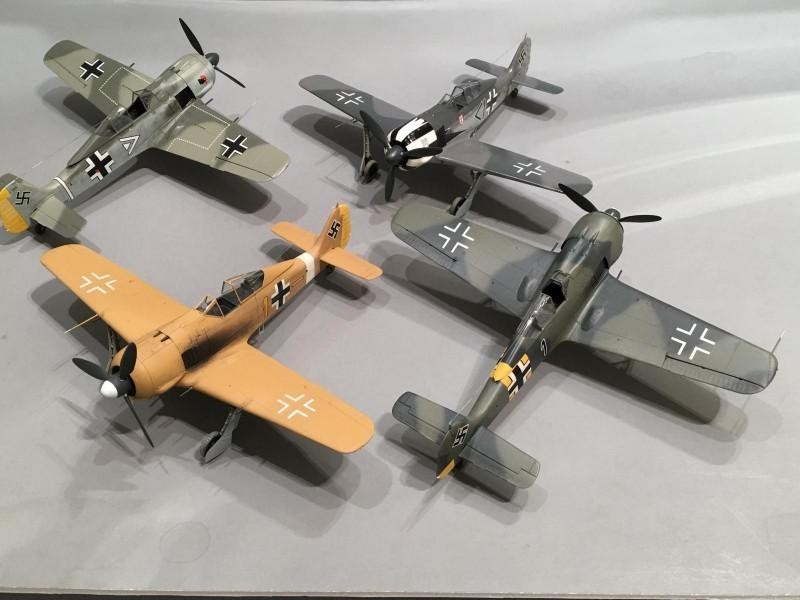
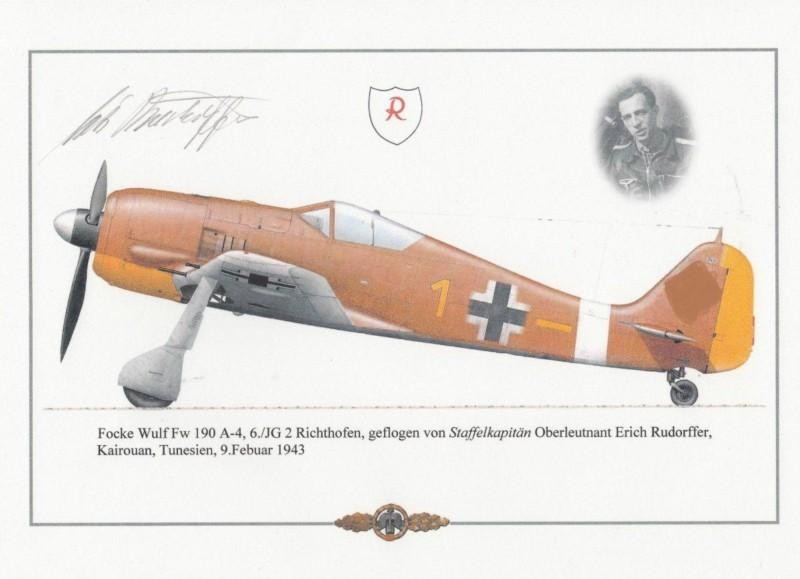
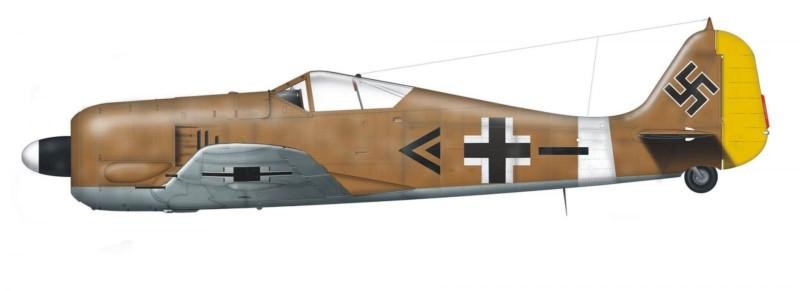
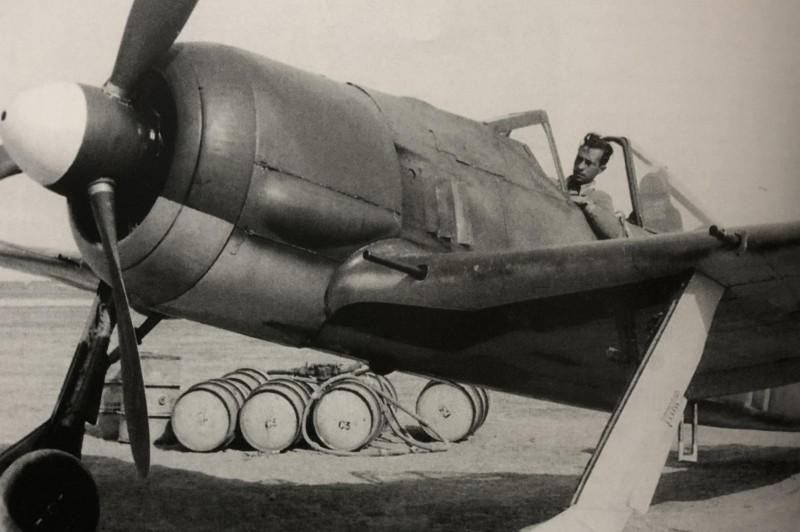
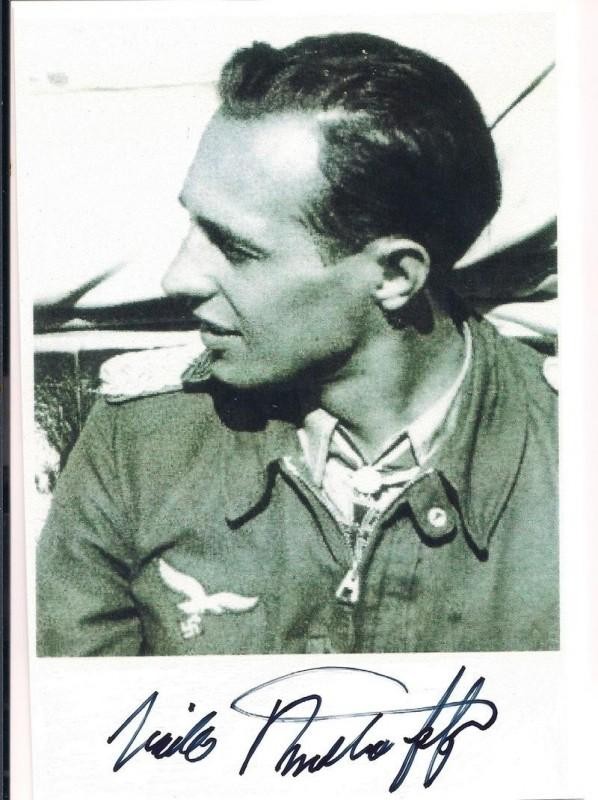
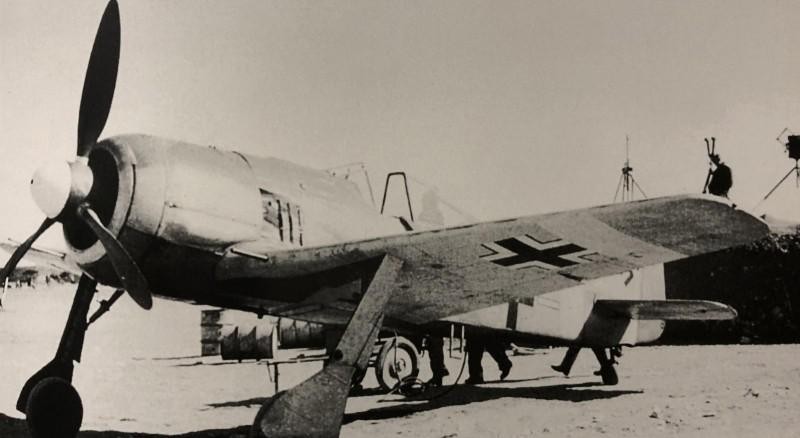
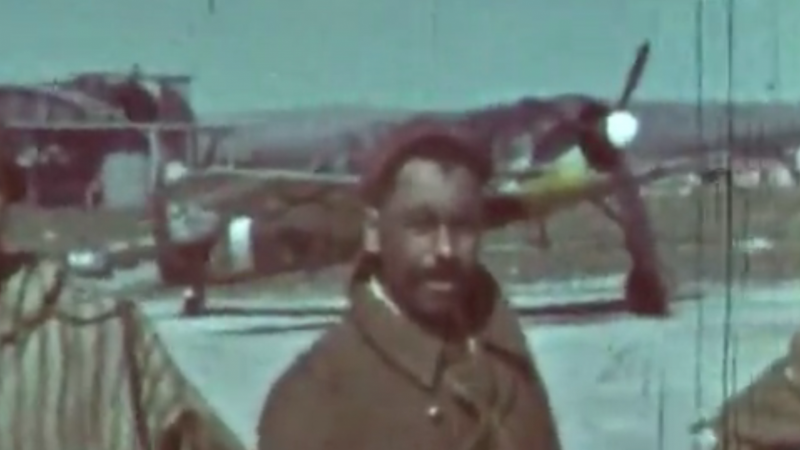

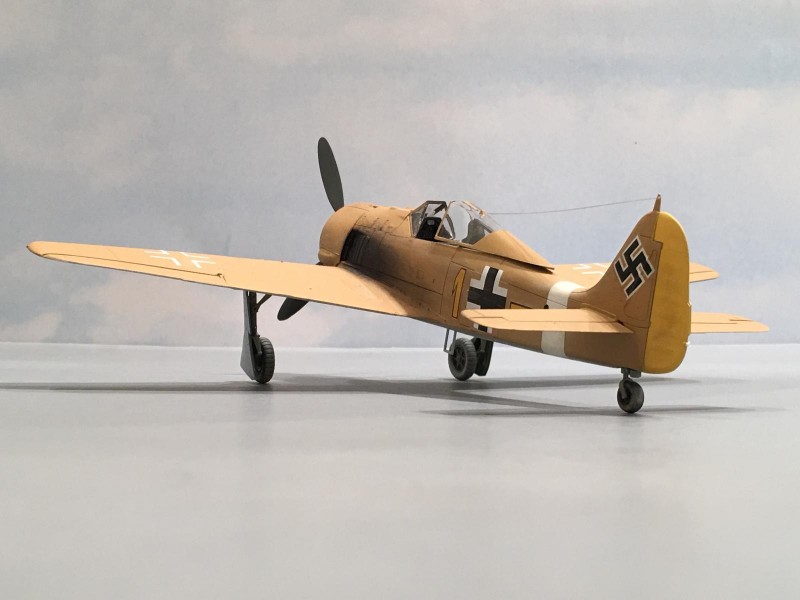
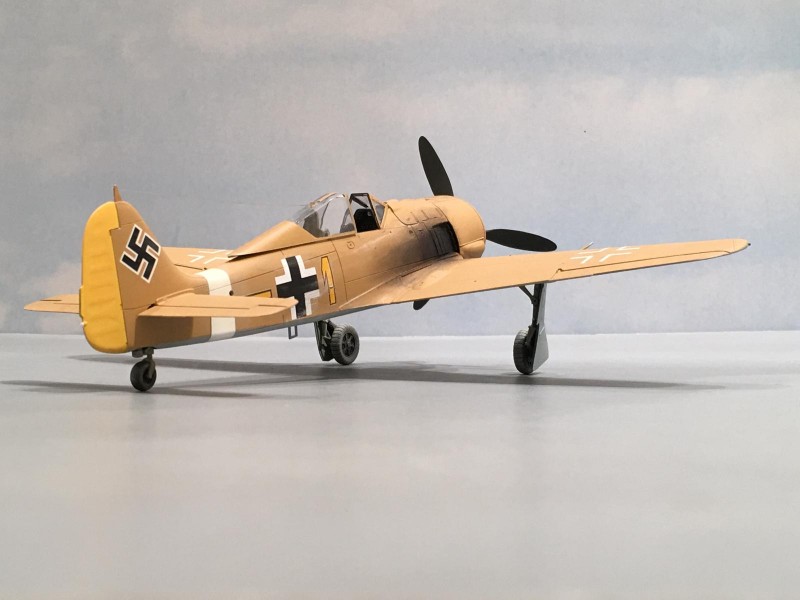
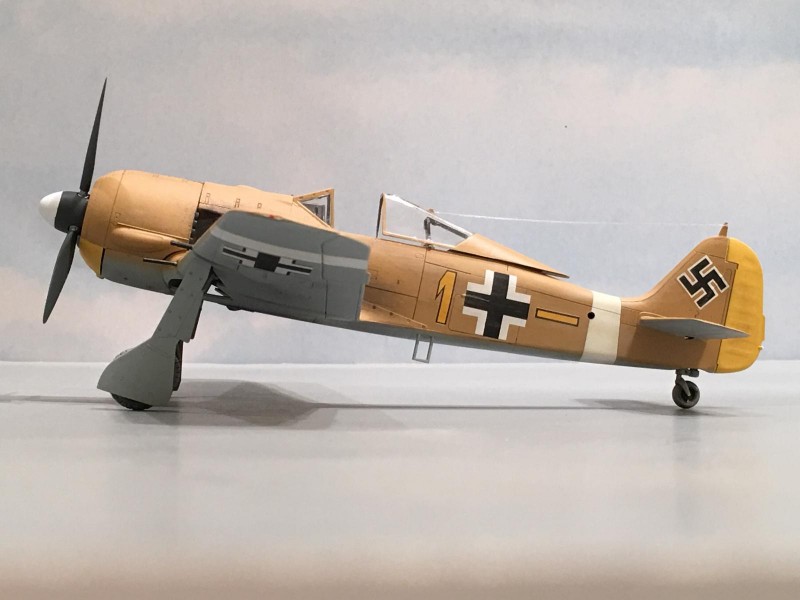
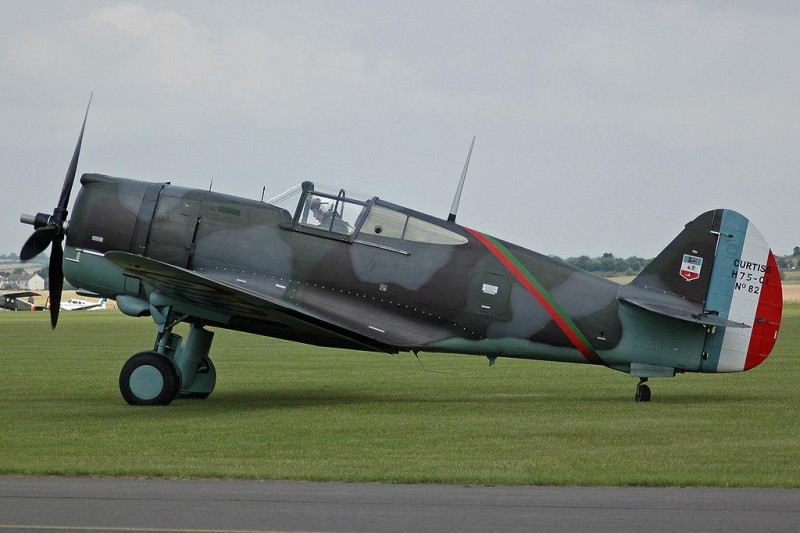

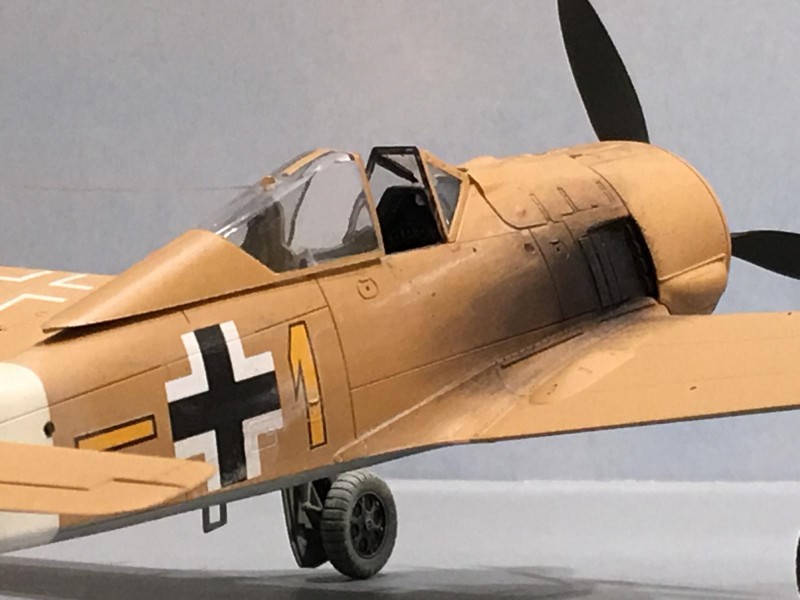
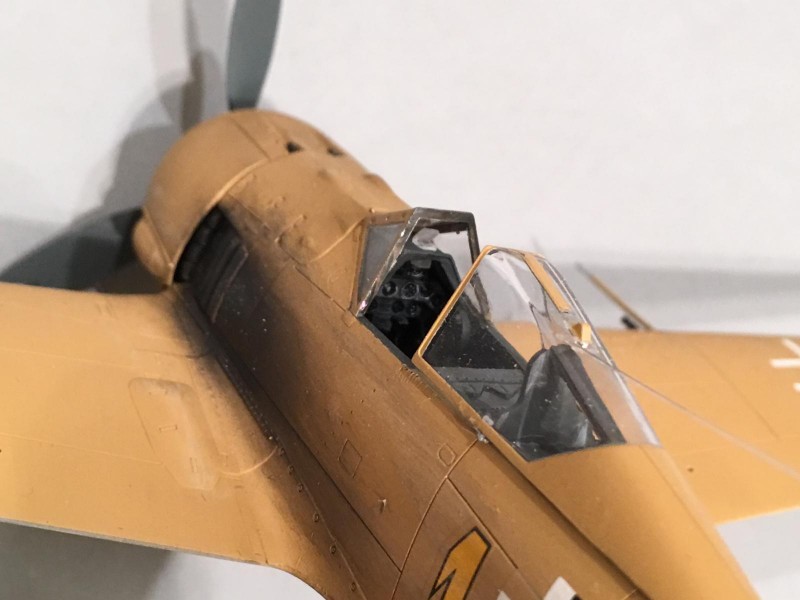
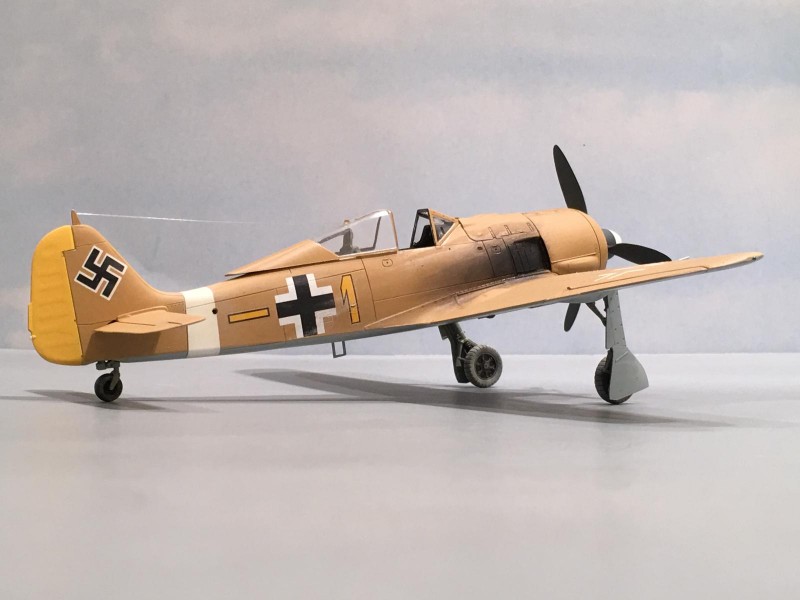


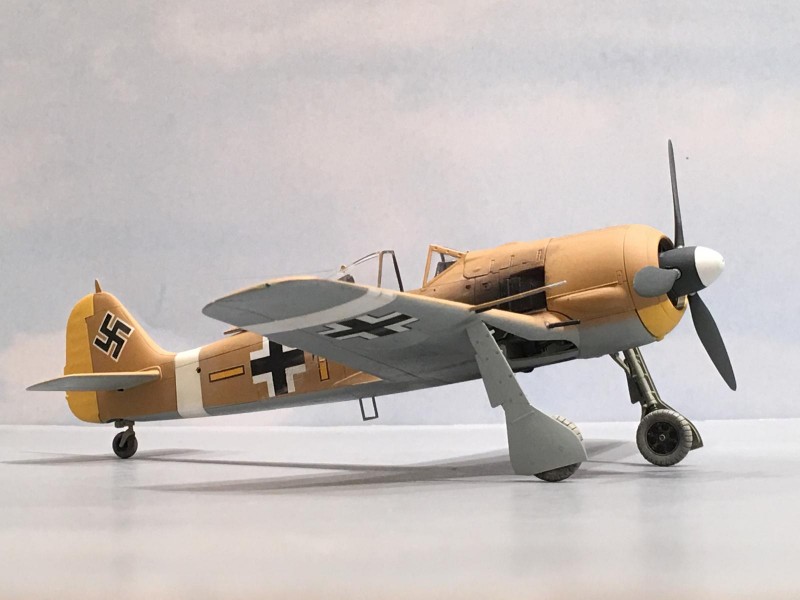
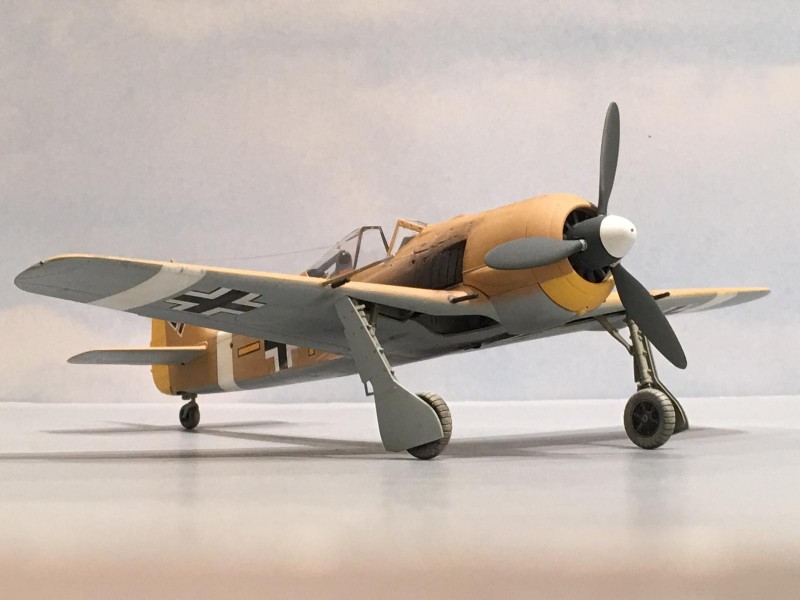
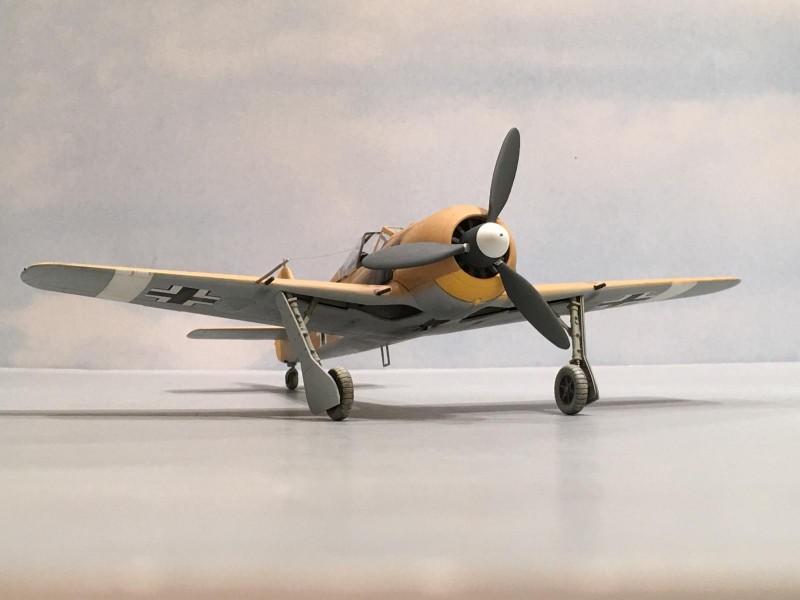

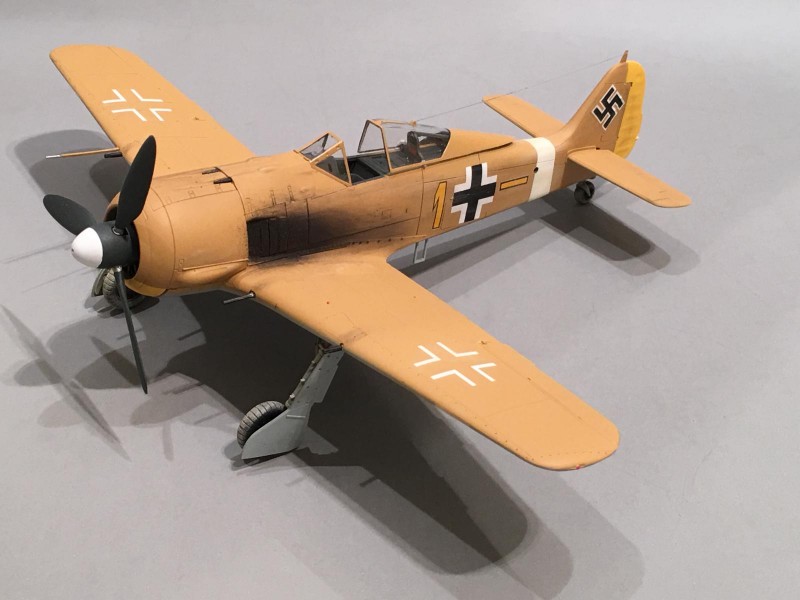


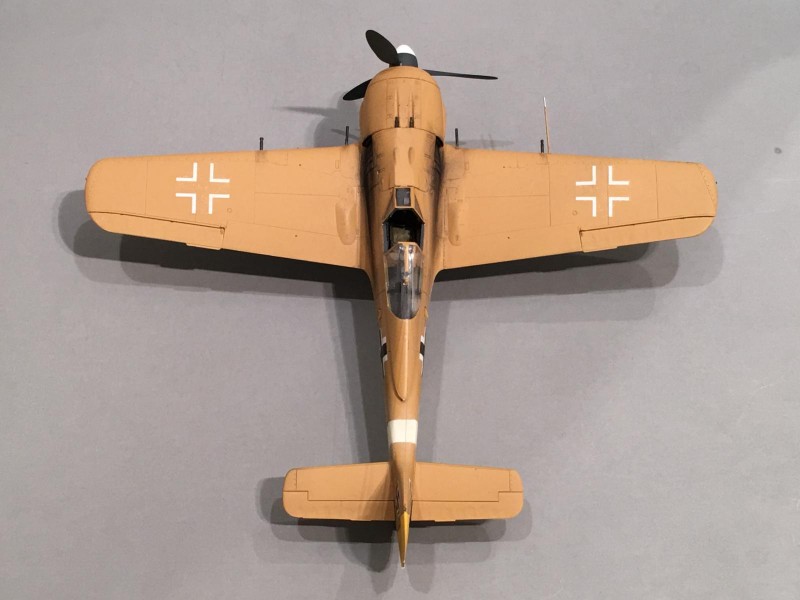
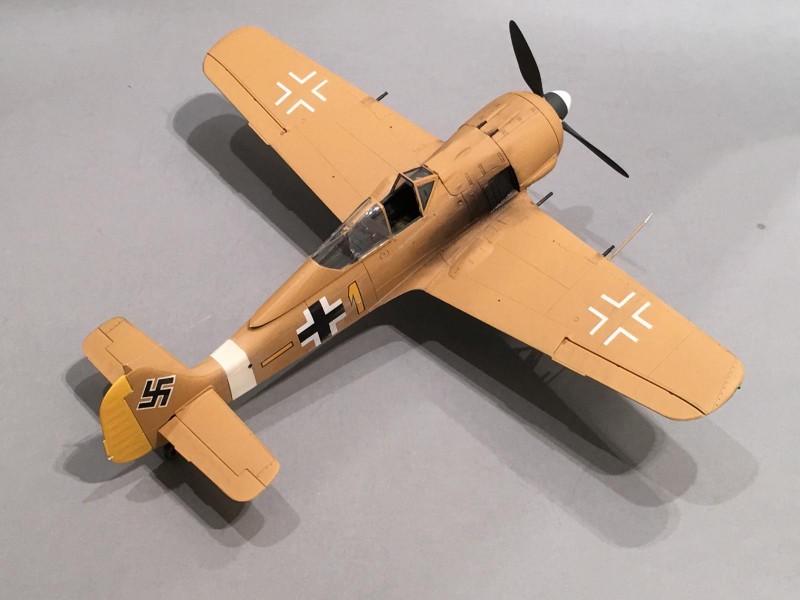
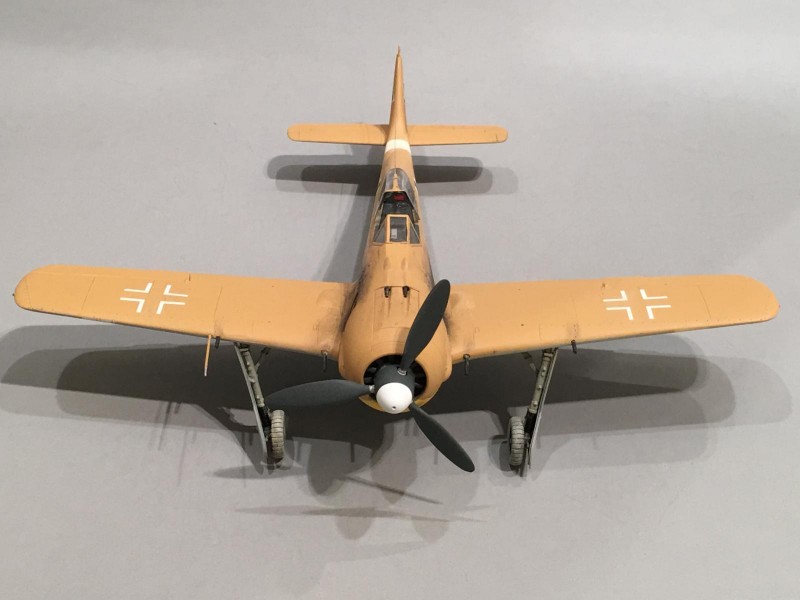
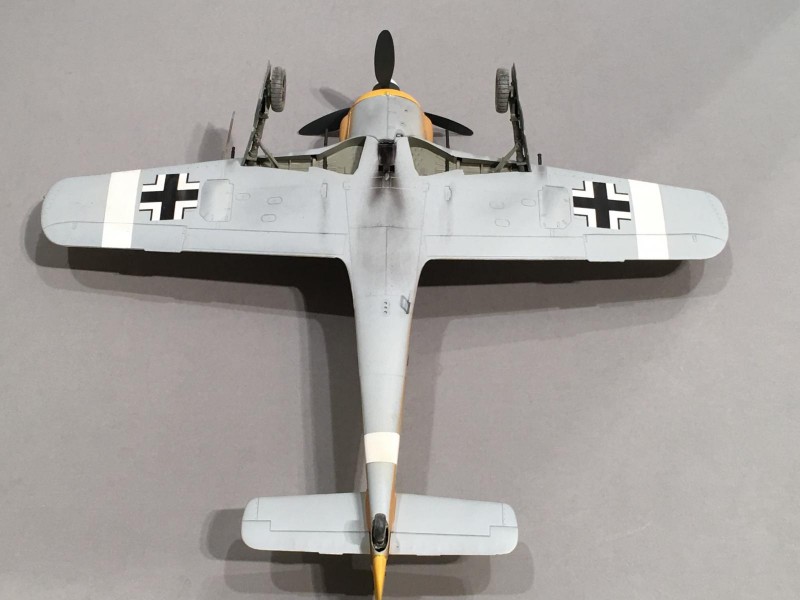

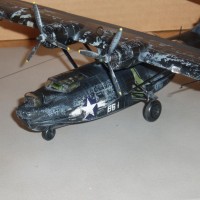
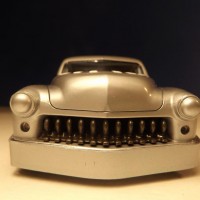
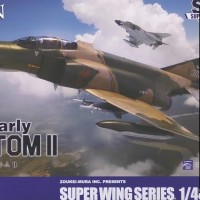
I have to say 'yellow 1' is my favourite here, Louis. The color scheme is fabulous and the photos show her off wonderfully. She's not a Dora, but you can't have everything, I guess.
Pic 20 really catches that trademark butcherbird stance on the undercarriage. Wonderful shot.
If you haven't looked at the WiP for this bird, I highly recommend it, a great thread full of modeling gold.
Thank you very much David ! This is about the best compliments one can get, coming from another “Big Time 190” fan . (I like the 190’s too, it has to be my favorite WW2 German Fighter).
Close behind it are the 262 and the 109…………..
The Butcher Bird stance is often built incorrectly. I have changed up the order of the photos included with the article, so your picture numbers may be off a tad now... sorry.
I tried my best and I’m very pleased with how this one turned out. It’s my favorite from the four I built, followed by Otto Kittel’s JG 54 machine.
Stay tuned in to the “Iron Werks” channel, as there just may be a few “Long Nosed Dora’s” coming out soon…………… maybe even a Ta-152 (or two) in the mix.
You just never know.
Oh, Louis, don't get me started on the 152 - she is a work of art.
Here's a few pictures of the remaining 190's in the stash. Most are long nosed Dora's. These are 1/48 scale with some being Tamiya or Hobby Boss kits.
I also have about 6 more planes in 1/32, with one that is a Hasegawa D-9.
Once I get a few more projects completed for the other GB's, I'll be firing up the assembly line again.
I agree, the 152 is a beauty !
and I probably should see a psychiatrist about this 'hoarding" thing... How's the couch looking doc ?
Very nicely finished, Louis (all of 'em) - as is usual with your contributions. The accompanying stories and photos are equally interesting. Good work, buddy.
Thank you Craig. I'm glad you enjoyed this one...
Well done Louis
Thanks George !
Louis, another triumph, this one four times over. You are also too kind in your comments, friend--a guy like me doesn't "coach" a guy like you--or anyone else in the GB. I'm more like a cheerleader or maybe the water boy.
Anyway, these are just fabulous works of art, and you produced them in true Gardneresque fashion--giving us the step-by-step, wrestling with the history of the subject, showing respect for the human element, aesthetics, and history all at once. Bravo. Fantastic work. As I've said before, I want to be like you when I grow up!
Well David,
There were a few times when I felt bogged down. Especially when I kept running into dead ends with photos. Thankfully Paul came through with an excellent link that had the home movies. This answered a lot of my questions.
During the whole process, from beginning to end, you were right there with comments that really helped me to get over the "hump".
Thanks buddy... it was appreciated.
I sincerely appreciate the compliments you posted too...
Very nice build. Love the presentation work.
Some time ago I finished this Zvezda A4, and like you I was enable to find any photo reference of the Dickfeld aircraft. But I did it anyway.
4 attached images. Click to enlarge.
That is a Beautiful looking build ! and I really like it ...
Some say there is a photo floating around that shows this plane after it was wrecked. Dickfeld reportedly ran the plane into a bomb crater on landing, and was seriously injured with a fractured skull. The photo is supposed to show this plane you built, but it's all twisted up and hard to make out any markings.
Thanks for sharing this gem with us.
These Zvezda kits are excellent.
Louis, a first rate presentation of your work as well.
Thank you Rob !
Louis, as much as I admire your work (and you know I do), especially that fabulous skill you have that allows you to combine multiple builds almost simultaneously, I confess to be mesmorized by your stash. No LHS can match you
All your Wurgers are great, but this one is not my favourite... Kittel’s mount is the best one for me.
Thanks Pedro for the kind words... I have always enjoyed your builds too, and your knowledge on the Luftwaffe subjects would be hard to beat.
It was a very close toss up for me between this one (yellow 1) and Kittel's plane, which I picked as my second choice. This was especially hard since I enjoy almost anything that is related to JG 54. I hope to write an article on Kittel's plane in a few days, if things go well.
The stash is a result of purchasing kits for many years and not having the opportunity to build them due to work ( and other "life" obligations). Having a very understanding wife helps a lot too...
I guess this is why I have been trying so hard to get so many of my kits built before I go to the Great Hobby store in the sky... Before I simply didn't have the time to build as often as I wanted. Now that I'm retired, I'm trying to make up for lost time I guess. Slowly but surely I'm whittling away at the piles of plastic ...
Now that’s the type of jubilation I would like to have... you are a lucky fellow Louis?. Now go on and show us more pics of Kittel 190
That's a lot of Focke-Wulf! An excellent build
!Thanks Robert ... I appreciate this.
Louis once again you prove that the Iron Works is not only alive and well but that it can produce some fine finished models. Unlike you I seem to be able to only concentrate and build one model at a time. Thanks for including some great historical background information along with the bonus of a great looking FW-190. Nicely done Louis.
Thanks Tom,
I don't think this one would have turned out as nice as it did, if not for some help I received with pictures from my friends... just like my PBY for the Midway Group Build , and how you sent me photos of the one at Wright Pat... priceless.
I'm glad you enjoyed the article too. The history behind the man and machine is what helps me to build a subject.
Thanks again !
The Iron Werks delivers again! Love the desert tan scheme on this - I don't think I ever saw that scheme on the 190 until your thread started. Looks fantastic!
Thanks Greg... I saw an artists rendition on this color scheme several years ago. I never really thought much about it again since often artists don't get things right. After Eduard released their new A4 kit, and this was one of the marking options available, I gave it a second look... and began doing some online research. Unfortunately, not many pictures exist of 190's in North Africa, (at least from my searches)...
I appreciate the compliments my friend. I think it looks almost as good as your Privateer... almost.
The 38-under-par 34 carded by the late North Korean tyrant Kim Jong Il, in the first round of golf he ever played, included 'five holes in one'.
These FW190s were your equivalent of that round, Louis! 4 holes in one, although clearly not at your first go! This is an absolutely exquisite build, and the article highlights your immense passion and drive to deliver outstanding models and histories based on the very best evidence, which you put under the microscope to check for accuracy every time. I hugely enjoyed the WIP thread, and when you published the photo of the 4 Butcherbirds it was the culmination of something very special! Although you won't know it, your builds here (and a cautionary tale from DLS) really influenced how I chose to weather and finish my latest offering.
Why am I really talking about North Korean despots and golf? I think you'll have guessed - but I reckon some of Herr Rudorferr's numbers might be similarly concocted to The Dear Leader's golf card! Others will undoubtedly know more (about Luftwaffe scoring and golf).
Thank you for the inspiration as ever!
Hello Paul,
I want to thank you again for providing the link to the Rudorferr home movies. That helped more than you will ever know.
I think that you are right with your "Golf Score Card" comparison. I have read an account where various Luftwaffe fighter pilots were validating claims for each other to bump up their scores. Once this was found out, the pilots involved were supposedly shunned by their fellow aviators. This carried on even after the War and they were treated differently at gatherings by the other Luftwaffe pilots, since they had lost credibility with their peers. I don't know if Rudorferr was one of the pilots involved, as I don't remember the names mentioned.
It sort of reminds me of a similar incident that happened in the Pacific, involving American and Japanese pilots. After a fierce dog fight, (claimed as won by both sides), the pilots from each side put in claims for more planes shot down that were actually in the engagement ! Something like 40 + kills when only 30 enemy planes were in the air ...
After the War was over, records were found that showed only two or three planes were lost on each side, with many more aircraft recorded as damaged. It's possible that several pilots may have been shooting at the same plane at different times, or even possible that some of the kills were instead damaged, and managed to return home, which is more likely.
I guess that's why they call it "The Fog of War".
Good stuff Paul, and many thanks again ...
Hi Louis - You're a machine to quote the nickname for the poor guy in Brad Pitt's "Fury". It's a great model with the fascinating Rudorffer background. I particularly envy you're masterly treatment of exhaust staining. Did you find a photo ref for the outline balkenkreuz on the wing upper surfaces? It's quite rare to get pics from an angle that shows the upper surfaces and "most" of the references I have show the conventional black and white form.
I'm with you on the attractions of the 190 though - different from the sleek Spit or P 51 but awesomely threatening and one of the looks right, flies right machines. Congrats of the builds.
Paul
Hello Paul,
Thanks for the compliments and new nick name. I have been using the Tamiya weathering decks to create the exhaust stains and desert "dust" effects on my recent builds. I'm happy with how they turn out using this method.
As far as finding photos showing the upper wing crosses, I did find some photos. By watching the Rudorffer home films, and pausing them at the right place, I was able to find some interesting stuff here.
This was early in the film, and shows the upper wing cross in standard black and white form. This picture also shows the white stripe extending up onto the top of the upper wing surface. I was very tempted to do this on my model, but decided I can always come back and add it later should I chose to do so. I can't tell if this picture shows overall RLM 79 top colored planes or not...
These next two pictures were taken in color, but it looks like the film has degraded some and the colors are not as brilliant as they should be.
But by studying them for a while, these planes look like they have the simplified "white" upper wing crosses. I don't see any black visible in either of these two. Another odd thing is how the fuselage cross was toned down considerably by painting over it with a darker color. This was very evident in many pictures I saved from the film.
This may actually be a picture of Rudorferr's plane just after it arrived in North Africa, before it was painted with the upper colors in RLM 79. This is why I chose the simplified Cross on my build, based on this theory alone.
However, this plane could also belong to Kurt Buhligen and it could be "Black 1"... I also noted this one didn't have a top wing stripe in White.
This photo also shows a desert 190 with simplified upper wing crosses.
Hope this helps answer your question, but to be honest, it looks like both types of crosses were used.
I simply went with the simplified white border cross on y build. Was it proper ? Could be... but I'm not 100 percent sure...
Louis - I'd seen the link to PB's video clip on an earlier part of your build log but hadn't watched it. I know you do oodles of research on all your subjects and was just curious about the upper surface crosses. No-one can point the finger whatever the choice since the photo evidence is as much interpretation as anything else. In any case, it's a build that anybody who knows a thing or three about a thing or three would be happy to call his own. Great!
Paul
Well done, Louis! The 190 is my favorite Axis aircraft. Nice job illustrating the different schemes on the four models.
Thank you John. The 190 is my favorite German fighter too... possibly my top pick for the Axis Powers as well.
In the very near future, I plan on writing articles for the remaining three Butcher Birds from this 4 plane feature. Please stay tuned !
Hey Buddy DAT! Great 190, my friend.
You sure got a lot of Focke-ing models in you stash!
Keep 'em coming, Amigo. Your build reviews, WIPs, and reveals are first rate as is the history & tales you pen for our amazement & amusement! Rudorffer would be proud to fly in one of your planes.
(By the way, I vote for the early 190s, rather than the TA-152s to be the best looking "Butcher Birds." I don't care much for the long snout. But they sure performed well!
Jeff my fellow DAT Brother from another Mother !
Yes there's quite a few models in the stash... I like how you put that and will try to remember it later when I'm building more of these...
I'm very pleased to see that you have enjoyed this article and build. Please stay tuned buddy, as I'm going to try and get the other remaining three 190's photographed and articles written about the men who flew them... Otto Kittel's plane will be next.
Otto Kittel's plane will be next.
I'm still with David L-S and the Long nosed Dora's. They just look like sleek, fast, and lethal machines to me... Where the short nose "Anton" is more like a heavy weight boxer... Both are deadly...
I have been itching to build up a long wing span TA-152 (or any 152 for that matter). Hopefully soon as I get some more projects cleared of the Iron Werks bench...
Good to hear from you.
Fantastic work Louis! Thank you for sharing all the history which comes with it. Allways great to learn about the real machine and the men who flew them.
Thank you very much Ferry. I actually enjoy researching the history part almost as much (and sometimes more) than the actual building. I think the history part helps to bring our hobby to life, and makes it much more interesting. This is especially true, if you are a history "Nerd" like me...
Great looking 190s Louis.
Thanks Anthony !
Louis, that's not a stash. It's a heist.
I may need to spend some time on your couch Doc, to go over this "hoarding" thing... It's probably a good thing you didn't see the pile of 109's or F4U's... you would probably have them come after me with a butterfly net...
In all seriousness, the "heist" is a result of collecting kits for years and not having the opportunity to build them as quickly as I purchased them. This was due in part to work, some car restorations that took most of my "spare" time, and other "life" related things. Now that I have retired, I guess I'm trying to build up as many as I can before my wife ends up selling them to Tom Cleaver after I'm gone to the "Great Hobby Store in the sky" ...and I pray that doesn't happen any time soon.
Each day is a gift...
Of course we haven't seen the other side with all the armor kits.
Oh, I've seen those Corsairs, Louis - but there comes a time when friendship forbids personal comment. Even so, the butterfly net is on standby.
You are so correct, every day is, or should be, something special. Even the bad ones can be turned around by taking a bit of a risk, getting out of the comfprt zone, or just doing something good (especially if it is for someone else).
Fantastic posting, Louis, great history, lovely photographs and a very special model. Please keep them coming.
George my friend ... it's great to hear from you. Thank you very much for the compliments on this build. I try to include a "history" lesson when I can. It makes the models come to life if you know the stories behind the men and their machines.
Please stay tuned for articles on the remaining three Wurgers from this build of Four planes. I plan on writing a story and posting some pictures of Otto Kittel's "Black 1" A-8 from JG 54 next...
Thanks again !
I really appreciate the time and effort you put into your projects Louis, from aircraft to armor they just come to life. The FW's is my favorite Luftwaffe type with the ME-262 a close 2nd, then the Ju-87 Stuka. Also my favorite scheme is the Desert colors used by the Luftwaffe. The overall RLM79 is not a common sight and on the A4 it really is a good looking airplane. The story really brings the Focke-Wulf to life and to read about it's history also makes its real. This is the fun part in not only building the kit but also the research in it's exploits. Outstanding. Now can't wait to see what you have in store with the other 3 "Butcher Birds, and the He-111's
Thanks Chuck for the kind words on this build. I have been watching your current projects come along too, in particular the HUGE Tamiya Lancaster you have on the work desk... It's really looking good too...
The FW is my favorite WW2 Luftwaffe type, next the 262 then the 109. The Stuka comes in at #4, but it made the short list too... The desert schemes they used is also on the top of my chart, right up there with JG 54 paint schemes.
Like you said before, we think an awful lot alike... and that's a good thing.
I have almost as much fun doing the research as I do the building. Sometimes, when a kit is fighting me each step, the research becomes even more fun than the build. But conquering a stubborn build and doing a decent job with it, gives me a lot of satisfaction too.
I made some more progress today on the 262 and the Monogram He-111. I hope to get some paint on both of them soon...
Thanks again buddy...
Very nice story and build Louis, as always. I like the story of the Croydon Highstreet shopping in the middle of a dogfight
Thank you Michel ... I have heard the story about a Mustang pilot chasing a 109 under the Eifel Tower, but this story with Rudorferr being chased down a street was a new one for me.
It reminds me of a scene from the 1970's movie "The Great Waldo Pepper", where they fly the Curtiss Jenny right down Main street... below the roof tops of the businesses. Imagine what would happen today if someone tried a stunt like that...
I'm curious about the white wing bands, which seem out of place with the already established practice of white wingtips on most Axis aircraft. Another FW-190 was posted on Hyperscale ( https://www.tapatalk.com/groups/hyperscale/eduard-1-48-fw190a-4-profipack-all-done-t494101.html#p2583419 ) with painted-over white wing and fuselage bands. I asked if the aricraft was an ex-Tunisian a/c and the builder replied, "According to the blurb in the Eduard instructions...'Wings and fuselage have fresh over painting of former white stripes- identification of aircraft attending the Case Anton late 1942 (occupation of the 'Free Zone' Vichy France).'"
So, perhaps I got it backwards, and the white wing bands were leftovers from Case Anton? Have ye any insight into the nature or origin of the bands?
I looked at the FW model you posted the link to. It's a great looking plane...
Unfortunately, I don't have the answer.
But I do know that part of JG 2 was assigned to Sicily before they went to North Africa. The rest of JG 2 remained in action against the Allies operating from the Northern Coast of France.
Could it be possible that some older FW- 190 A-3 planes were being left behind, since they were receiving newer A-4's ? If that's the case, this may explain the over painted wing stripes.
Could it be possible that this plane operated from Sicily or North Africa and was then returned to Northern France ?
Hi Louis- I loved the history lesson and your 190s are really stunning.
Thank you George. I sincerely appreciate the compliments.
oh you've been dancing with wulfs...carry on...nice